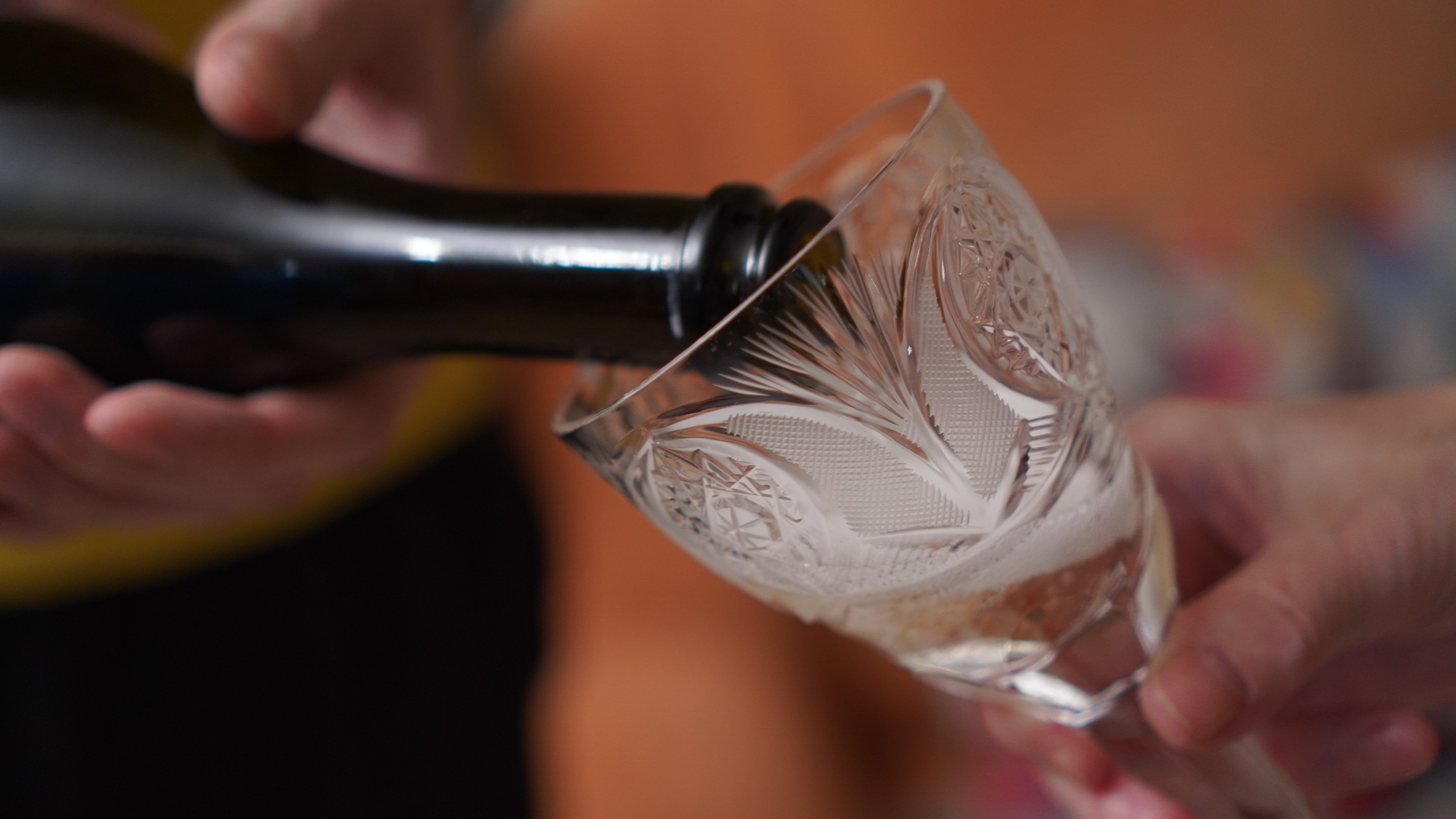
New Yr’s Eve is upon us and nothing screams celebration fairly like a bottle of Champagne. Whether or not you’re toasting to 2024’s finish or cheers-ing to the beginning of 2025, numerous bottles of bubbly are certain to be popped because the clock strikes midnight. However should you’re storing your bottles within the fridge and pulling them out simply earlier than serving, it’s possible you’ll discover a big cloud of vapor emerge because the cork pops out.
Nicknamed “Champagne smoke,” this vapor cloud isn’t something to fret about and can sometimes dissolve inside seconds, however can nonetheless be slightly stunning should you aren’t ready for it.
To study extra about Champagne smoke and the way it kinds, VinePair tapped Cameron Philip, a sommelier at NYC hotspot Coqodaq, residence of the most important Champagne assortment in the US.
“Whenever you open up a bottle of Champagne, there may be a lot stress concerned that it’s truly freezing water vapor within the course of and creating that small frozen cloud for a second,” Philip explains. “I imply, a Champagne cork has the identical quantity of stress because the tire of an 18-wheeler. So all that stress is launched and creates this gasoline that freezes mid-air earlier than it blows off.”
Temperature additionally has a fantastic deal to do with how a lot “smoke” will emerge whenever you hear that satisfying pop. In case your bottle has been sitting out on the counter for hours, you’re unlikely to see a lot of a vapor cloud after your cork. As an alternative, the wine itself will most likely find yourself exploding out of the bottle as carbon dioxide is way much less secure at hotter temperatures. Conversely, in case your glowing wine has been pulled proper from the fridge after hours of chilling, you’ll doubtless see a reasonably sizable cloud.
“The colder you get a bottle, the extra secure the effervescence is on the within, that means the wine will likely be much less aggressive when launching out of the bottle,” Philip says. “Nonetheless, the colder the bottle, the colder the vapor is as properly. So you could have a really chilled liquid paired with an intense stress change forcing that cloud to seem.”
Whereas the cloud is solely innocent and never a mirrored image of the wine’s high quality, Philip advises ready till it has totally evaporated earlier than pouring the bubbly and giving it a scent, lest you inhale straight CO2. However should you’re in a rush, there are some methods to attenuate the quantity of vapor that emerges, and it’s all about how the bottle is opened.
Philip explains that Champagne — or another glowing wine for that matter — ought to all the time be opened at a 45-degree angle, with the cork tilted away from the physique. From there, they clarify, the cage ought to be loosened however not eliminated and held in place together with the cork together with your non-dominant hand. Then, the bottle — not the cork — ought to be grabbed from the underside together with your dominant hand and twisted from there, slowly and really gently.
“You need to by no means open a bottle by twisting the cork,” Philip says. “By utilizing this method, you’re kind of gently working the cork out, which slowly lets slightly little bit of air seep in and can ultimately pop the cork with out making that vast explosive sound. It additionally reduces the quantity of smoke that emerges.”
*Picture retrieved from Irina through inventory.adobe.com
The article Ask a Sommelier: What Is ‘Champagne Smoke?’ appeared first on VinePair.



